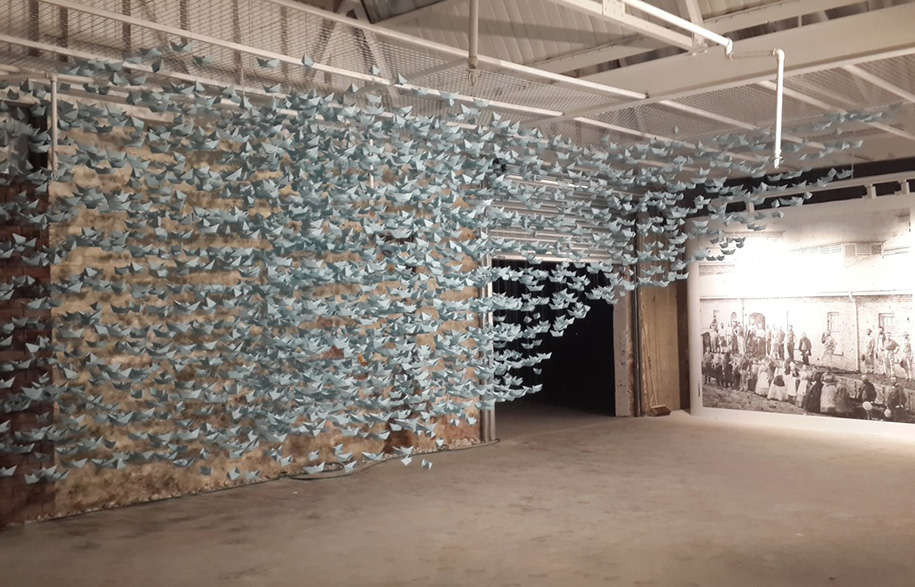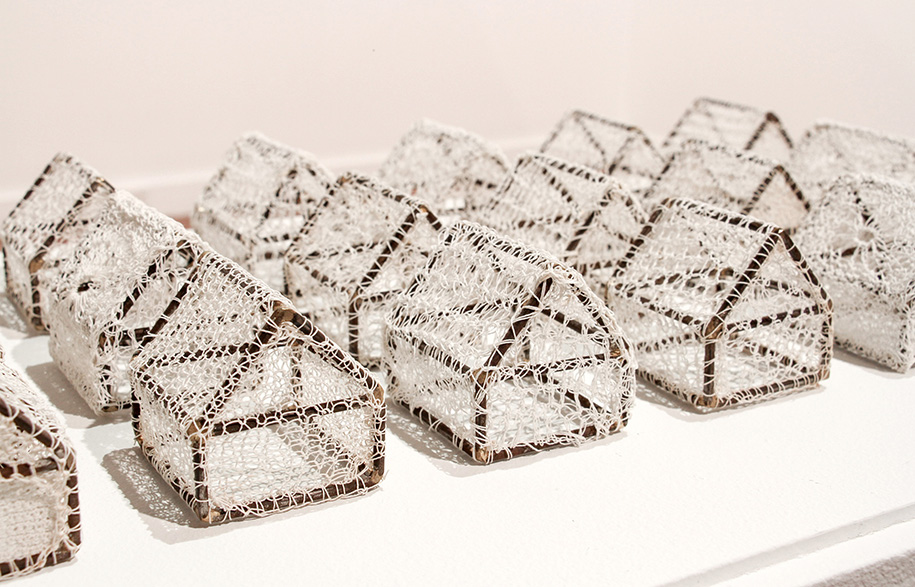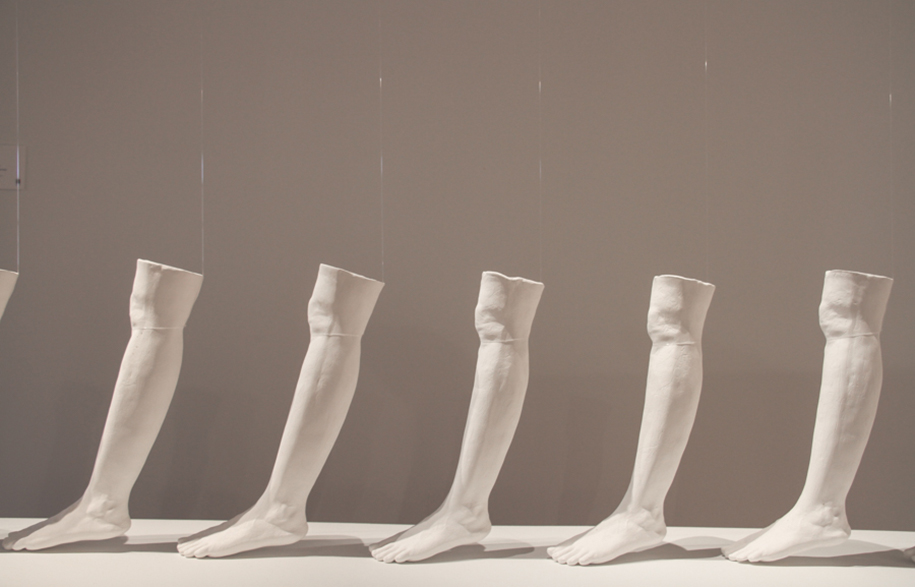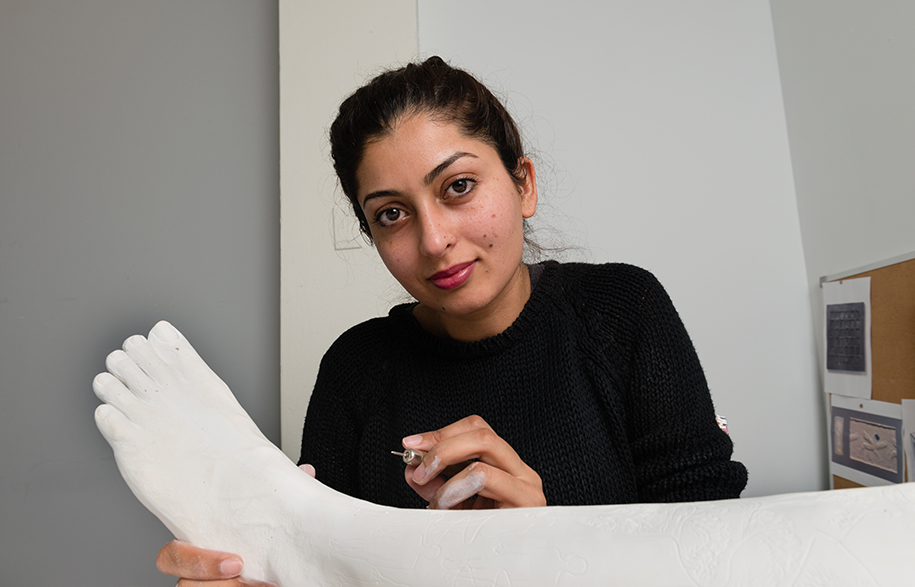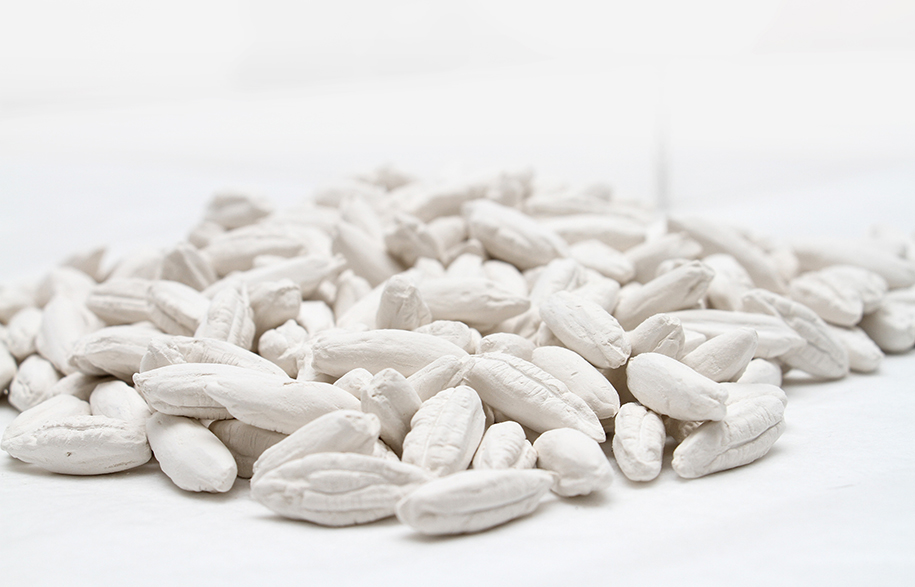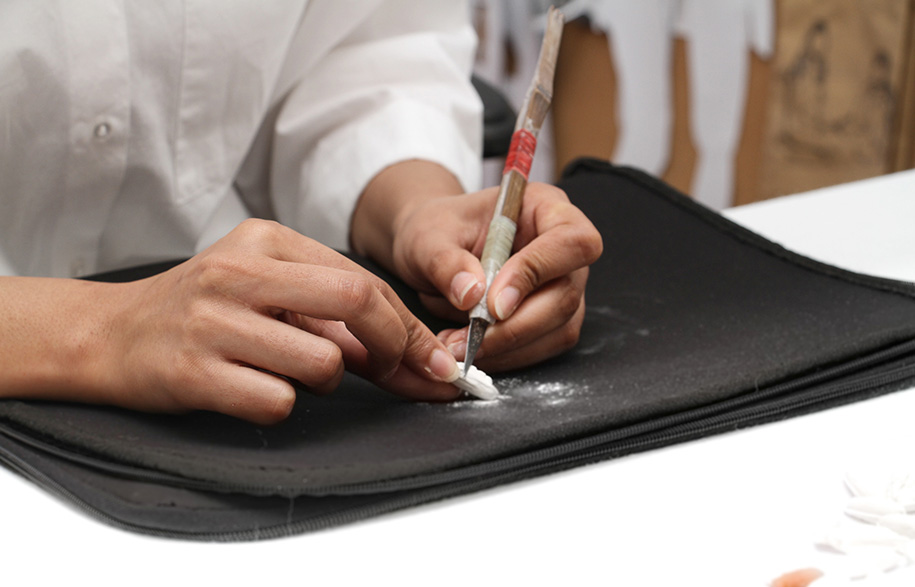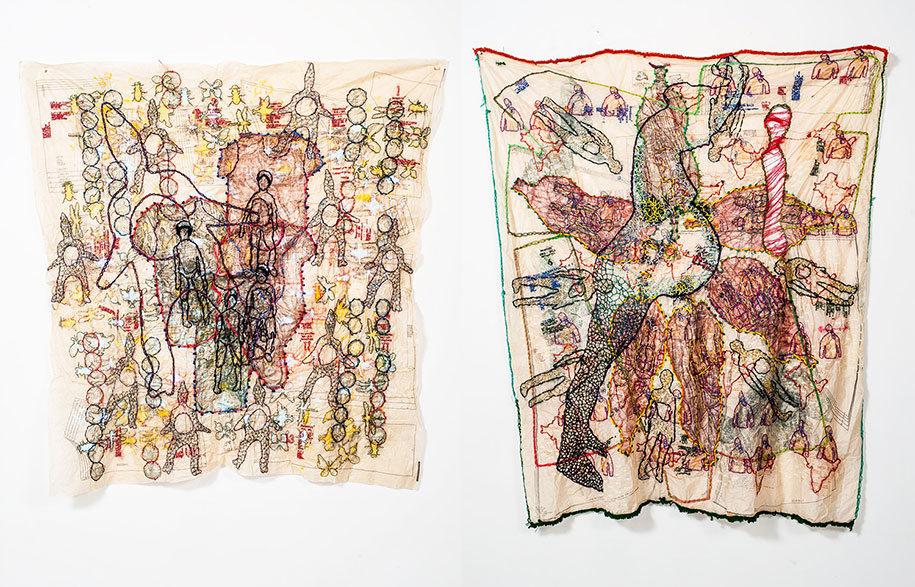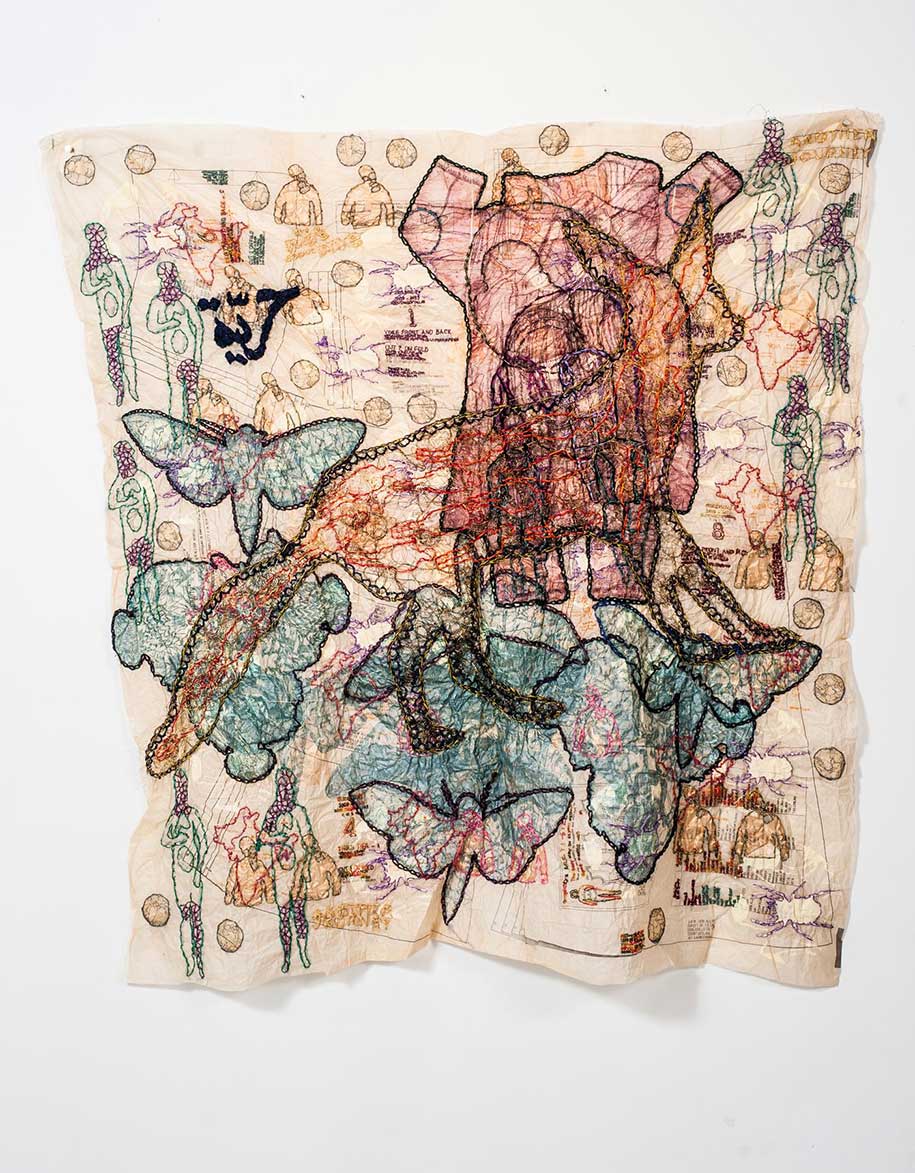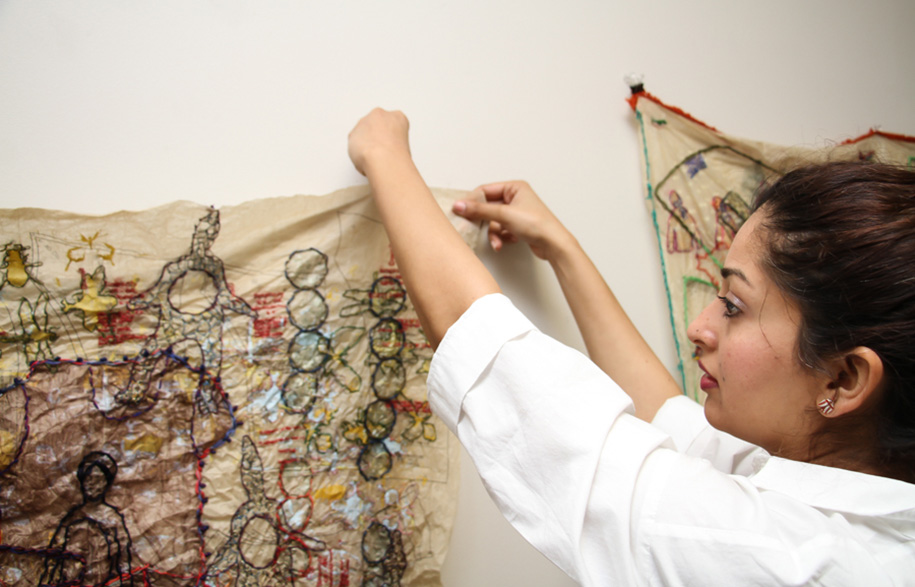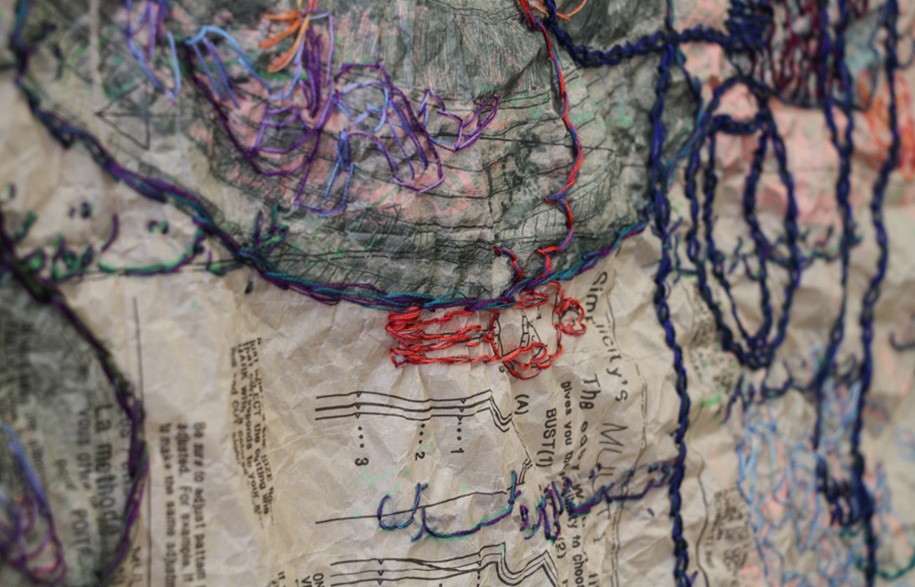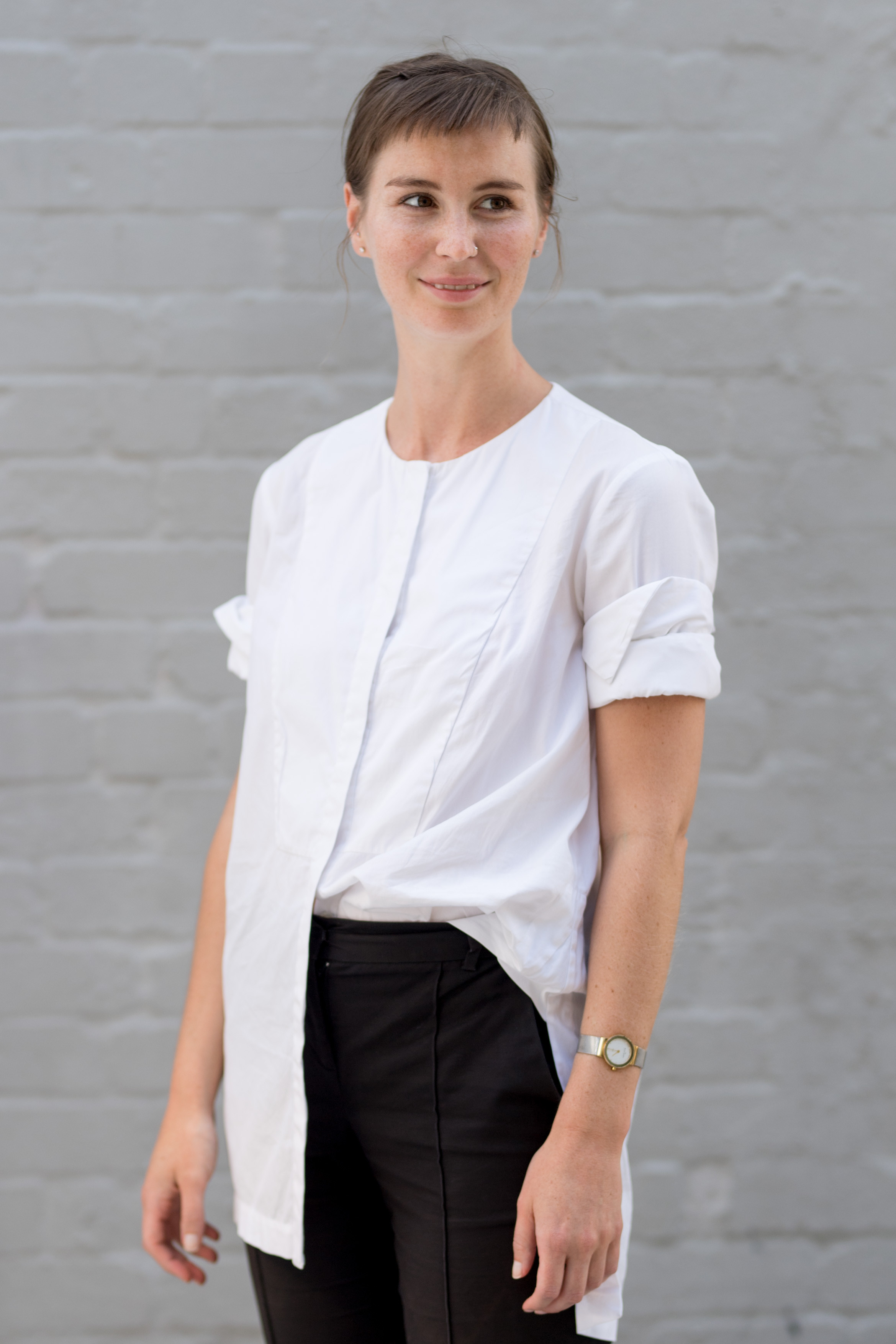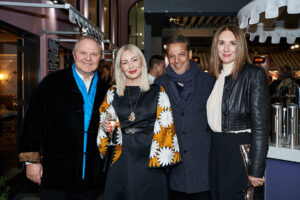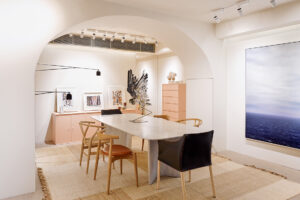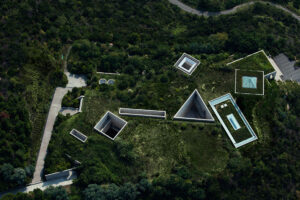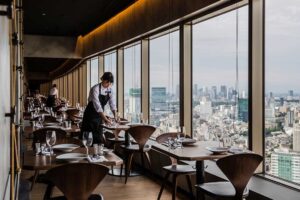Sewing, scratching and scraping, artist Mehwish Iqbal applies the patience of a surgeon to her work. Using a scalpel, or a needle and thread, she engraves stories onto fragile surfaces of porcelain, charcoal and paper.
Enigmatic and powerful, her work is underpinned with strong themes of assimilation, mass migration and transformation.
An Australian artist born in Pakistan, the world is now awaiting Mehwish Iqbal’s next move.
2016 was a big year for the artist. First she won a residency at Parramatta Artist’s Studio and then became a finalist in 64th Blake Prize. This year, she will travel to Brooklyn NY for another residency and show her work at Art Central in Hong Kong. We caught up with her gallery .M Contemporary, to learn more about the themes explored in her solo show FLUX.
Arguably the most arresting work is a minimalist sculpture entitled, Forcefield of Complex Journey. It’s a series of human sized porcelain legs that are inscribed with patterns and stories.
“Creating art in porcelain had a sacred value for me, because it was such a laborious process,” explains Iqbal.
“Even passing it thought the kiln, the fire is so unforgiving it can destroy the piece. In this way, the process parallels the human migrant experience,” Iqbal says.
The porcelain legs, which will be sold individually, are Mehwish’s own left leg, which she cast as a reminder of the migrant journey, often made on foot.
“I wanted to convey that fragile state of travel and the vulnerability of humans. The uncertainty of not knowing where you are heading,” she explains.
The Last Prayer is another sculpture comprised of 5000 sculptures of date seeds. Each one is like an individual drawing that has been cast and engraved in porcelain by hand.
This work references the tradition at the end of Ramadan of eating three dates to break the fast. The seeds are engraved to look like female genitalia in an additional reference to the ongoing labour of migrant women trying to assimilate into another culture.
Mehwish’s more literal works use motifs of insects, birds, maps and women carrying children to talk about the migrant experience.
These works are sewn onto fragile garment paper and embroidered with layers of bright thread. The thread is responsible for clear mark making, she says taking the place of ‘muddy’ paint strokes.
“There are maps. And you can see the grim imagery of insects going on too – so maybe in the distance you might see them as very beautiful, but on closer inspection you can see the grim seriousness of the work,” Mehwish explains.
Mehwish Iqbal’s solo show FLUX can be seen at .M Contemporary from 9 -25 March 2017.
Words by Belinda Aucott


